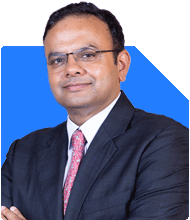Ramalingam Kalirajan |10906 Answers |Ask -Follow
Mutual Funds, Financial Planning Expert - Answered on May 08, 2024
He has an MBA in finance from the University of Madras and is a certified financial planner.
He is the director and chief financial planner at Holistic Investment, a Chennai-based firm that offers financial planning and wealth management advice.... more

Hello sir I am 24 years old. My monthly income is 18000. And I have a two ULIP PLAN in Bajaj Allianz and HDFC sampurna nivesh with monthly 3000 of both. I want to invest more 500 per month in Mutual fund, Is it better to invest?
Disadvantages of ULIPs: ULIPs, or Unit Linked Insurance Plans, often come bundled with high charges, including premium allocation charges, policy administration charges, and fund management charges. These charges can significantly reduce the returns on your investment over the long term. Additionally, ULIPs typically offer limited flexibility in terms of fund choices and lock-in periods, restricting your ability to adapt to changing financial goals or market conditions.
Advantages of Mutual Funds: Mutual funds offer several advantages over ULIPs. They provide greater transparency regarding charges, allowing you to understand the costs associated with your investment. Moreover, mutual funds offer a wide range of investment options across asset classes, such as equity, debt, and hybrid funds, catering to various risk appetites and investment objectives. Mutual funds also offer flexibility, enabling you to adjust your investment strategy as needed without incurring significant penalties.
Considering your age and income level, investing an additional 500 rupees per month in mutual funds would be a prudent decision. It allows you to benefit from the power of compounding over the long term and diversify your investment portfolio beyond ULIPs. You can choose mutual fund schemes based on your risk tolerance, investment horizon, and financial goals, ensuring a more customized approach to wealth creation.
Best Regards,
K. Ramalingam, MBA, CFP,
Chief Financial Planner
www.HolisticInvestment.in
You may like to see similar questions and answers below
Abhishek Dev | Answer |Ask -Follow
Financial Planner - Answered on Aug 05, 2023
Ramalingam Kalirajan |10906 Answers |Ask -Follow
Mutual Funds, Financial Planning Expert - Answered on May 29, 2024
Ramalingam Kalirajan |10906 Answers |Ask -Follow
Mutual Funds, Financial Planning Expert - Answered on May 15, 2024
Ramalingam Kalirajan |10906 Answers |Ask -Follow
Mutual Funds, Financial Planning Expert - Answered on Jul 22, 2024
Ramalingam Kalirajan |10906 Answers |Ask -Follow
Mutual Funds, Financial Planning Expert - Answered on Jul 18, 2024
Ramalingam Kalirajan |10906 Answers |Ask -Follow
Mutual Funds, Financial Planning Expert - Answered on Dec 19, 2025
Nayagam P P |10859 Answers |Ask -Follow
Career Counsellor - Answered on Dec 19, 2025
Ramalingam Kalirajan |10906 Answers |Ask -Follow
Mutual Funds, Financial Planning Expert - Answered on Dec 19, 2025
Ramalingam Kalirajan |10906 Answers |Ask -Follow
Mutual Funds, Financial Planning Expert - Answered on Dec 19, 2025
Ramalingam Kalirajan |10906 Answers |Ask -Follow
Mutual Funds, Financial Planning Expert - Answered on Dec 19, 2025
Radheshyam Zanwar |6751 Answers |Ask -Follow
MHT-CET, IIT-JEE, NEET-UG Expert - Answered on Dec 19, 2025
Radheshyam Zanwar |6751 Answers |Ask -Follow
MHT-CET, IIT-JEE, NEET-UG Expert - Answered on Dec 19, 2025
Samraat Jadhav |2514 Answers |Ask -Follow
Stock Market Expert - Answered on Dec 18, 2025
Reetika Sharma |432 Answers |Ask -Follow
Financial Planner, MF and Insurance Expert - Answered on Dec 18, 2025
Reetika Sharma |432 Answers |Ask -Follow
Financial Planner, MF and Insurance Expert - Answered on Dec 18, 2025
























